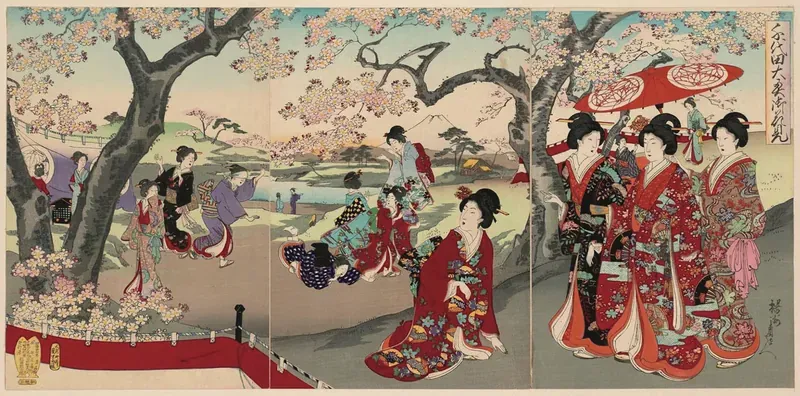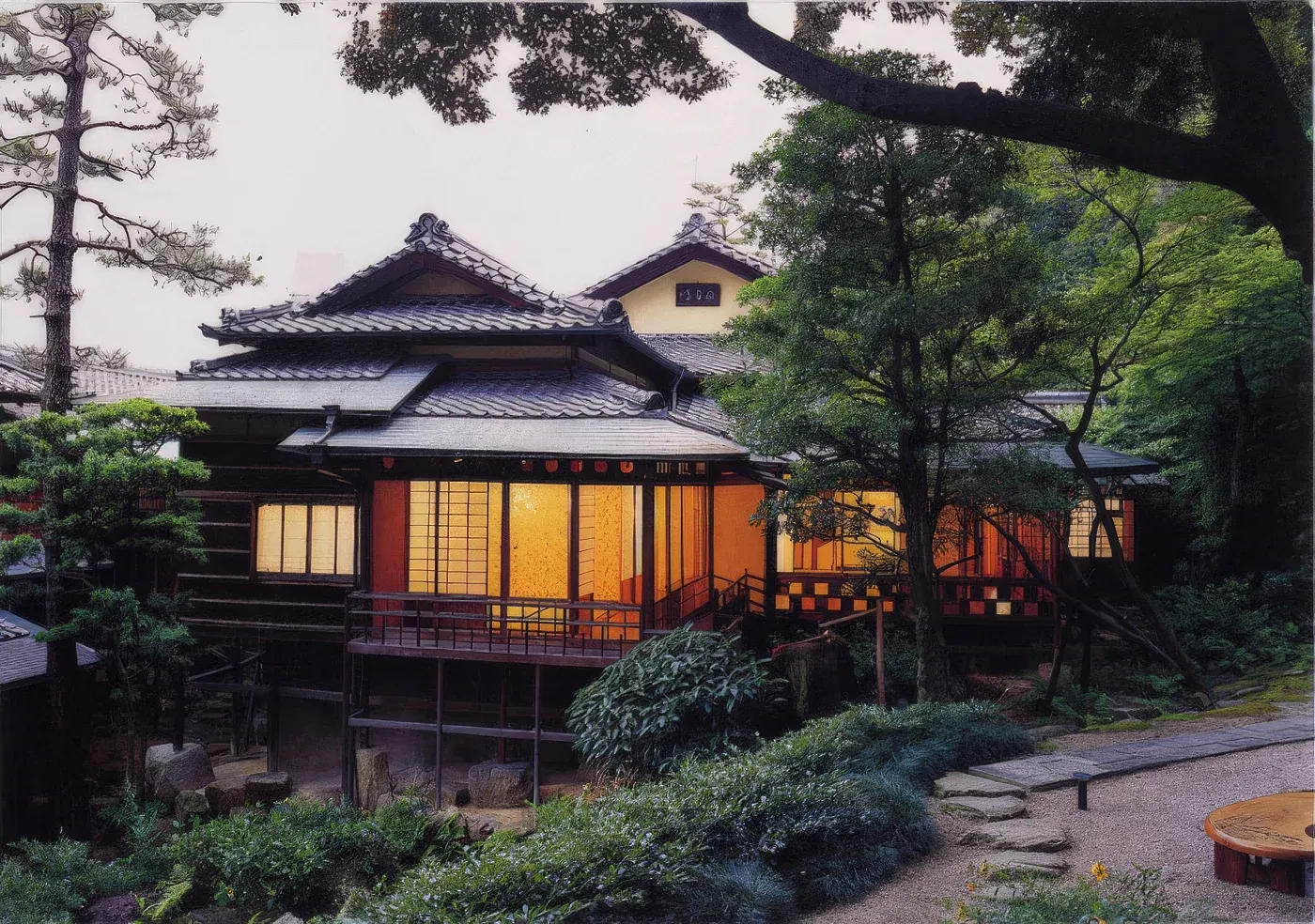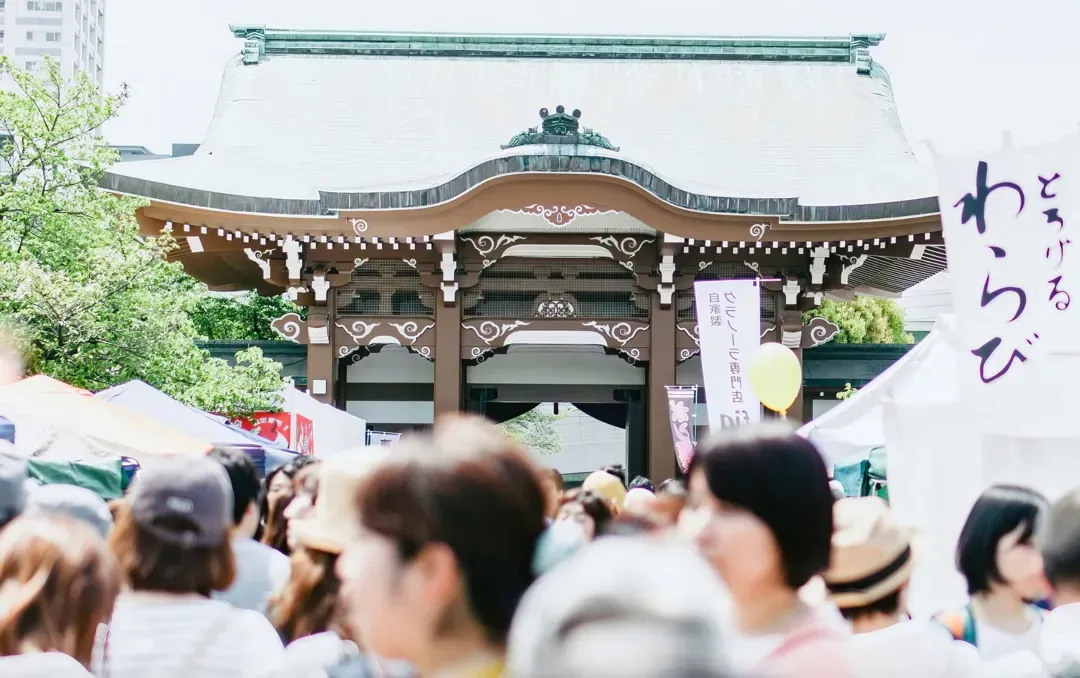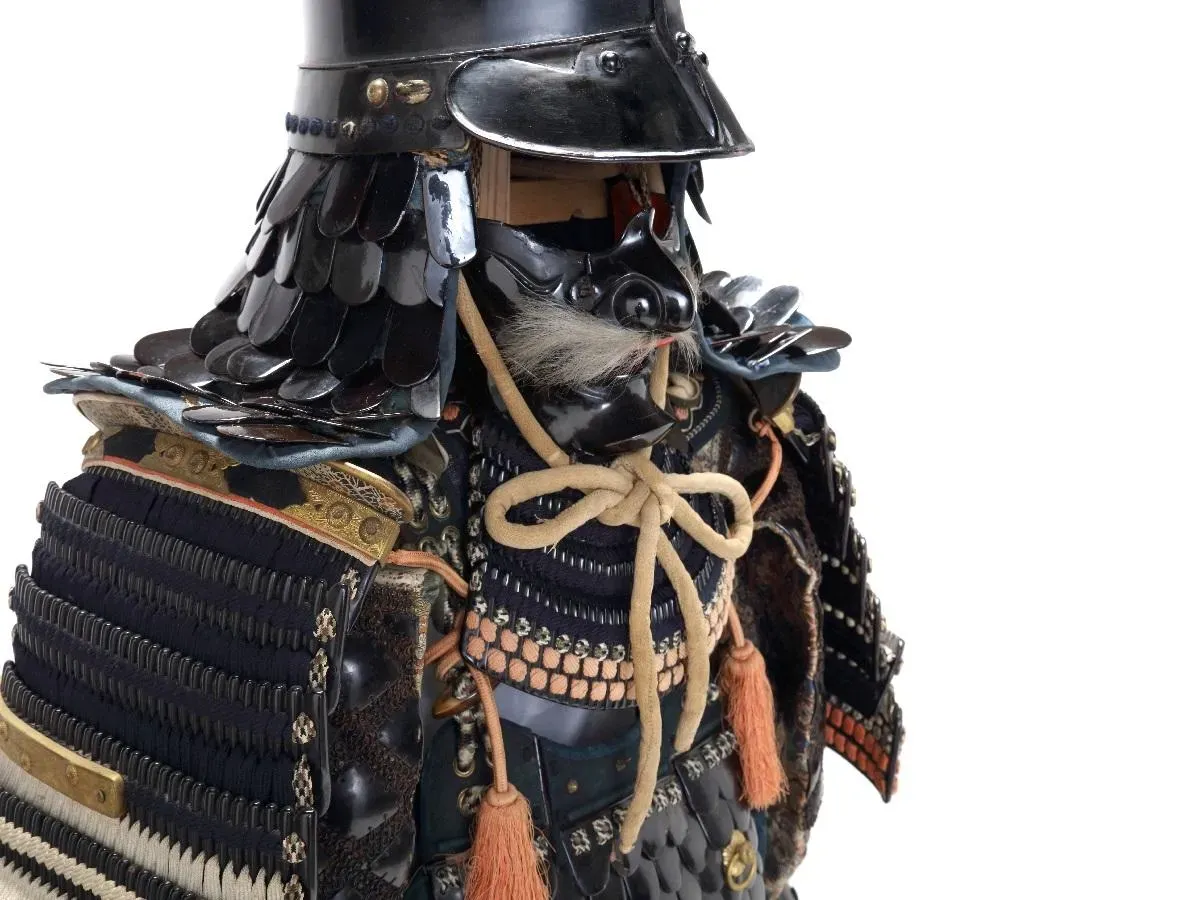Prepare for Hanami With Some Trivia!
Spring has sprung. And in Nagoya, that means it is time again to contemplate mono no aware, the ephemeral and slightly melancholy nature of being alive. Apparently, this is best achieved through the age-old tradition of sitting on blue polytarps, passing around child-sized bottles of sake (by which I mean the size of a human child, not a size fit for one), and generally making as much of an ass of yourself as possible in a crowded public park. In a word, it is fantastic.
Cherry blossoms (sakura) are charged with meaning. Their fragile and fleeting bloom has been compared to a woman's beauty, blossoming for a short period before withering into old age. The fighting men of Japan – soldiers, samurai, and gangsters – often used them as a symbol of a life that was short but magnificent. Because the Japanese school year begins in April, the sakura are also seen as a sign of beginning, signaling a new stage in life.
Of course, most of this ancient symbolism has been lost in the pursuit of drunken revelry, but... hey.
Here are some fun facts about hanami to help prepare for a deeper appreciation of this perennial ritual – or maybe just to feed you some useless trivia to impress your friends while waiting for your turn at the enormous sake bottle.
A Bit of History
When and how this whole hanami thing got started is a mystery, but it has been going on for a long time. Some say it started in the Nara period (710-784) due to the encroaching influence of the Chinese Tang Dynasty and its established culture of flower appreciation. Others argue it is a Japan-original, with 3rd-century hanami parties being mentioned in the Nihon Shoki (Chronicles of Japan). Either way, plum blossoms, and wisteria were originally the flowers of note, with nobody giving a hoot about sakura. However, like pretty much everything else in traditional Japanese culture, this all changed with the publication of The Tale of Genji, which included a sakura-hanami party scene. From then on, the word came to be exclusively associated with parties under cherry blossoms.
Sakura are Halfu!
While hanami parties may be indigenous to Japan, the sakura trees aren't exactly native. Many varieties originated through complex hybridization and cultivation spanning centuries between indigenous Japanese wild cherries and various Asian species, including some from the Himalayan region.
This cross-cultural botanical exchange has resulted in approximately 400 recognized varieties of ornamental cherry trees in Japan as of 2025, up from the previously documented 305, thanks to continued hybridization efforts by dedicated botanists and enthusiasts. The beloved somei yoshino, still considered the most iconic variety, was perfected towards the end of the Edo period. And yes, although they are called "cherry blossoms" in English, most ornamental sakura don't produce edible fruit, so if you didn't already know this–don't get your hopes up for free cherries during your petal-gazing adventures.
Masu
To help manage the big sake bottles, people are often seen drinking from masu, a square wooden box-shaped cup usually with some design etched in it. Masu were originally a standardized measuring cup for counting rice, said to contain exactly enough rice to feed a working man for one day. 365 masu added up to a koku, enough rice to feed someone for a year; this was used as a measure of wealth in feudal Japan. In Nagoya, you'll find many shops around Osu and Sakae selling beautifully crafted masu – a perfect souvenir that's both practical for your hanami parties and culturally significant.
Nowadays, the focus of the event has changed, which resulted in the phrase hana yori dango. It means being more interested in the tasty and sweet foods of hanami parties (dango) rather than wasting time staring at the flowers (hana) and contemplating mono no aware. Personally, I think this would be better rendered as hana yori sake, but maybe that's just me. Nagoya residents should consider incorporating hana yori hitsumabushi or hana yori miso katsu for a proper local take on the saying.
Hanami in Nagoya and Aichi
Nagoya and Aichi Prefecture boast some of the region's most spectacular viewing spots. Nagoya Castle's grounds feature approximately 1,000 cherry trees, creating a magnificent contrast between the historic castle and delicate pink blossoms. The nighttime illuminations have been enhanced for 2025 with subtle projection mapping that highlights both the castle's architectural features and the surrounding sakura.
Pro tip: The southwest corner of the outer moat offers the best photo opportunities with fewer crowds.
Post-Pandemic Hangover
The post-pandemic era has introduced new hanami etiquette that somehow manages to make the festivities even more delightfully Japanese. Tsuruma Park and Yamazaki River in Nagoya now feature meticulously measured and numbered blue tarp "zones" with QR code reservations. While this sounds like it would kill the spontaneous party vibe, it mostly resulted in people simply planning their spontaneity more efficiently. Only in Japan could adding more rules to a party somehow make it more fun.
Aichi Sakura Spots
For locals seeking alternatives to the standard park party, Aichi Prefecture offers unique hanami experiences. Inuyama's cherry blossom festival combines sakura viewing with traditional cormorant fishing demonstrations, while Okazaki Park surrounds a historic castle with over 800 cherry trees alongside samurai-era reenactments during peak bloom.
For families with children, Morikoro Park (Aichi Earth Expo Memorial Park) offers special hanami areas with playground access and child-friendly activities. For those seeking tranquility, the mountainside temple of Kojakuji in Toyota City features ancient weeping cherry trees with far fewer visitors than the city spots.
Whether you're new to the area or a long-time resident, hanami season offers a perfect opportunity to appreciate both traditional Japanese culture and the unique local flavor of the NAG. So grab your blue tarp, fill your masu with sake, pick up some Nagoya-style fried chicken wings, and join in this centuries-old tradition of appreciating the beauty that's here today and gone tomorrow – just like that hangover you'll have after a proper hanami party!

Doug Breté
Stirred, not shaken - by anyone or anything that drinks vodka martinis. Author of the forthcoming "Out of Breath - Kim Jung Un and the Baby of Svendalore."










Leave a Comment